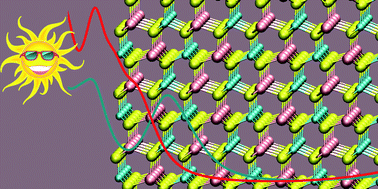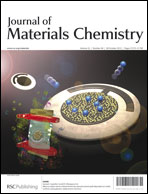Wurtzite-type CuInSe2 for high-performance solar cell absorber: ab initio exploration of the new phase structure†
Abstract
CuInSe2 (CIS) has been widely studied because of its potential applications in photovoltaics, and the phase structure is believed to significantly affect its electronic and optical properties. A new wurtzite-type phase of CIS is predicted by density functional theory calculations combined with evolutionary methodology. In contrast to the common chalcopyrite CIS, Cu atoms of the predicted phase form new bonds with Se atoms derived from the interaction with the second nearest neighbor due to symmetry, and such new bonding results in beneficial band structure for both electron transition and transport because of the delocalized Cu-d electrons. The calculated absorption spectrum of the new phase further reveals an improvement in light absorption index over that of the chalcopyrite phase under near-infrared and visible light. Thus the wurtzite-type CIS has advantageous electronic and optical properties and is a highly efficient active layer material for high-performance solar cells.


 Please wait while we load your content...
Please wait while we load your content...